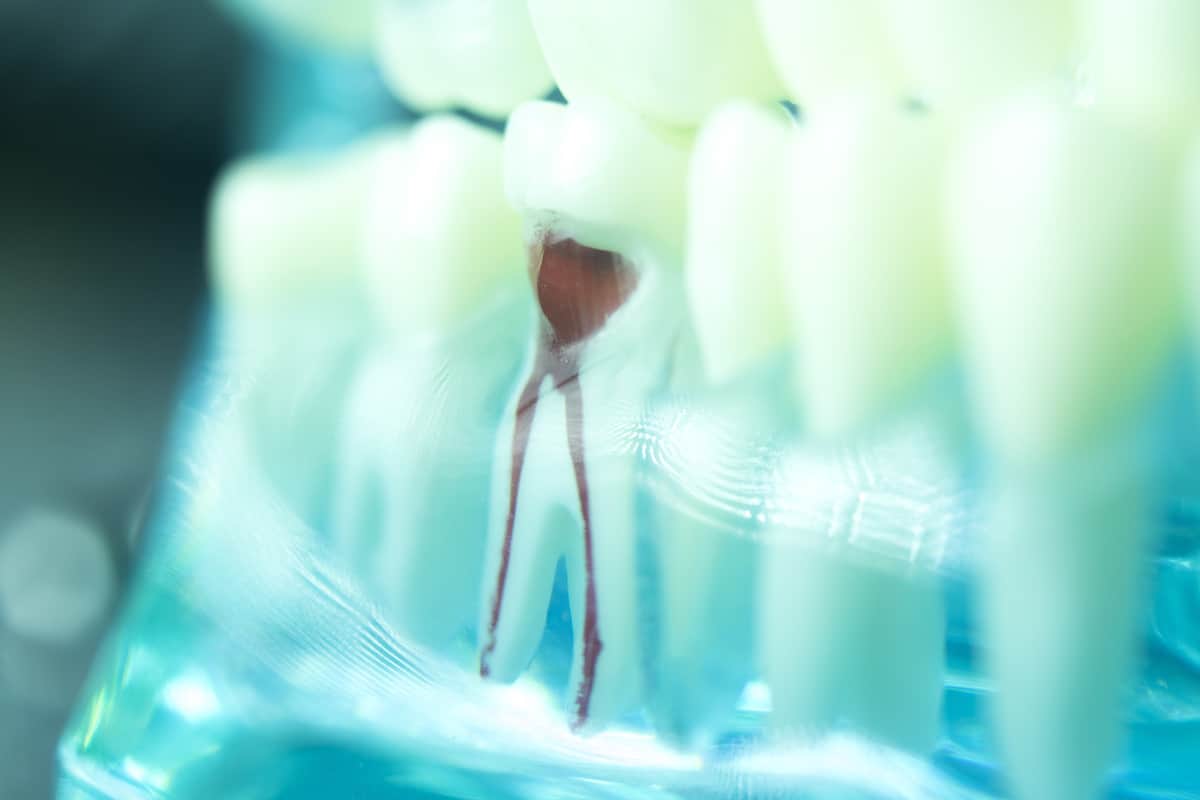Traditionally, infected teeth causing severe pain and swelling were pulled out by your dentist. Today, a successful root canal treatment (endodontic treatment) is your best bet if you want to keep your original tooth. Keeping your tooth helps to prevent your other teeth from drifting out of line and causing jaw problems. Saving a natural tooth also avoids having to replace it with an artificial tooth, which can be costly.
The root canal system is a space inside the hard layers of each tooth forming a tube or canal. This area is filled with soft dental pulp made up of nerves and blood vessels that help your teeth grow and develop. This is what allows your teeth to feel pain and sensitivity.
A root canal involves removing dead and infected tissue from within a tooth and replacing it with a filling material to prevent bacteria from re-entering the tooth.
 Dental tooth root canal dentists teeth model closeup.
Dental tooth root canal dentists teeth model closeup. Numbing
In the past, root canals are known for being a painful procedure. Today, anaesthetics and other techniques work to numb the tooth during the dental surgery.
If you’re still feeling nervous about the procedure, you can consider asking for a sedative to help you relax.
Use a Rubber Dam
To protect your tooth from the bacteria in your saliva during the treatment, a rubber dam will be placed around the tooth being treated.
What the Buzz is all About
The inside of each tooth has one to several tubes or canals that contain a nerve, tissue and capillaries that will need to be cleaned out. Dr. Vlahos will make an opening in the tooth to reach the root canal system and the damaged pulp by using only the best dental instruments.
Seal the Area
Once cleaned and shaped, the tooth canal(s) are filled with either temporary or permanent filling material to seal the tooth and keep any bacteria from re-entering. In some cases, Dr. Vlahos may use a permanent filling or a crown to restore your tooth. The choice of restoration will depend on the strength of the part of the tooth that is left. A back tooth will likely need a crown due to chewing, which puts a great deal of force on back teeth. If there is not enough of the tooth left, posts may be used to help support the crown.
If you’re in the St. Catharines and Niagara region and you think a root canal is right for you then contact Dr. Vlahos Dentistry today!